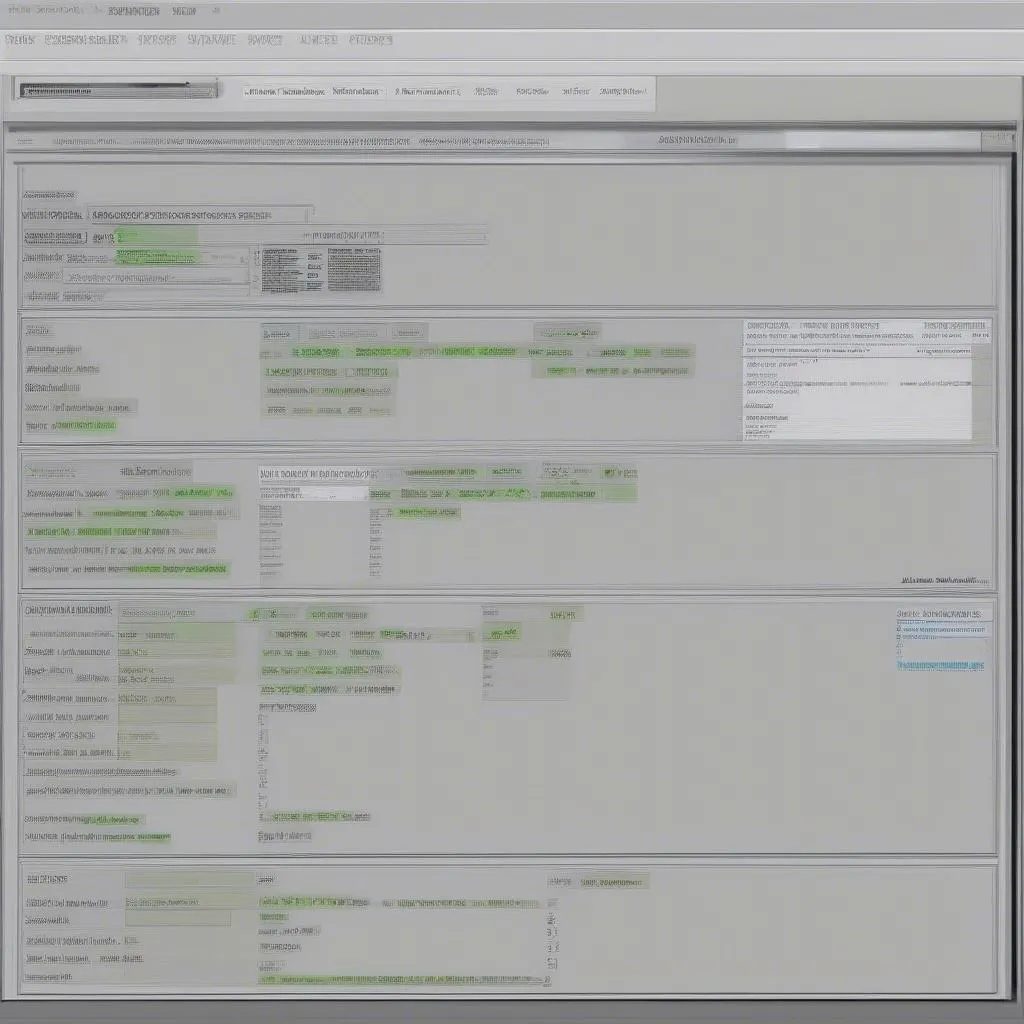Have you ever plugged a scan tool into a car and felt overwhelmed by the sheer amount of data it presented? You’re not alone! Many mechanics and automotive enthusiasts struggle with interpreting the data from their scan tools, but fear not, you don’t have to be a code-cracking genius to decipher these digital messages. In this comprehensive guide, we’ll break down the process of understanding scan tool data, so you can diagnose car problems with confidence.
Understanding the Importance of Scan Tool Data
Scan tools are essential diagnostic tools for any automotive professional. They provide a window into the car’s electronic systems, revealing crucial information about performance, faults, and potential issues. Think of it like a doctor using an EKG to diagnose a heart condition – scan tools are the medical instruments of the automotive world.
Diving into the Data: What You Need to Know
### Common Codes & Definitions
The first step in interpreting scan tool data is understanding the codes. These codes are like cryptic messages that tell you what’s going on under the hood. For example, a P0171 code in a 2023 Ford Mustang could indicate a lean condition in the engine’s fuel mixture.
### Interpreting Data Beyond Codes
But codes are only part of the story. Scan tools also provide live data streams that show real-time information from various sensors and components. This data is crucial for understanding the vehicle’s health and performance.
### Examples of Data and Their Significance
Imagine you’re working on a 2022 Toyota Camry with a misfire. Your scan tool might show a code for a misfire, but the live data could also reveal fluctuating fuel pressure, indicating a faulty fuel pump.
### Manufacturer-Specific Data
Each car manufacturer has its own unique set of codes and data parameters. This is where specialized scan tools like Dealer Scanners for European cars come into play. These tools offer access to a wider range of manufacturer-specific data, providing more detailed insights into vehicle diagnostics.
### The Use of a Dealer Scanner
For example, a dealer scanner for a BMW would have access to codes and parameters specific to BMW vehicles, allowing you to pinpoint problems with their complex electronic systems.
### Common Mistakes and Misinterpretations
Even experienced mechanics can make mistakes when interpreting scan tool data. Here are a few common pitfalls:
- Ignoring context: Simply relying on a code without considering other data points or the vehicle’s symptoms can lead to incorrect diagnoses.
- Jumping to conclusions: It’s easy to get caught up in a code and assume it’s the root cause of the problem, but there might be other underlying issues contributing to the code.
- Not understanding the nuances of specific parameters: Every parameter has its own normal operating range, and understanding these ranges is essential for accurate interpretation.
Tips for Accurate Interpretation
- Use a reputable scan tool: Invest in a high-quality scan tool from a trusted brand.
- Consult repair manuals: Refer to the vehicle’s repair manual for specific data parameters and their meanings.
- Stay updated on technology: The automotive industry is constantly evolving, so keep up with the latest scan tool features and data interpretation techniques.
- Practice, practice, practice: The more you use your scan tool and interpret data, the more confident you’ll become.
Frequently Asked Questions:
### How can I learn more about specific codes and data parameters?
You can find extensive information about codes and data parameters in repair manuals, online forums, and technical databases.
### What resources are available to help me interpret scan tool data?
There are many online resources available, such as websites, forums, and technical databases.
### What are some common mistakes to avoid when interpreting scan tool data?
- Ignoring context: Simply relying on a code without considering other data points or the vehicle’s symptoms can lead to incorrect diagnoses.
- Jumping to conclusions: It’s easy to get caught up in a code and assume it’s the root cause of the problem, but there might be other underlying issues contributing to the code.
- Not understanding the nuances of specific parameters: Every parameter has its own normal operating range, and understanding these ranges is essential for accurate interpretation.
### Are there any tips for interpreting data for specific car brands?
Yes! Different car brands have their own unique codes and data parameters, so it’s helpful to research manufacturer-specific resources.
Conclusion:
Mastering the art of interpreting scan tool data is a valuable skill for any automotive professional. By understanding the basics of codes, data streams, and manufacturer-specific parameters, you can diagnose vehicle problems with confidence and ensure your customers get the repairs they need.
 scan-tool-data-interpretation
scan-tool-data-interpretation
 scan-tool-codes-explanation
scan-tool-codes-explanation
Remember, if you need help with diagnostics or have any questions about scan tool data, don’t hesitate to reach out! Our team of expert mechanics are available 24/7 to assist you on WhatsApp: +84767531508. Let’s keep your customers rolling!


